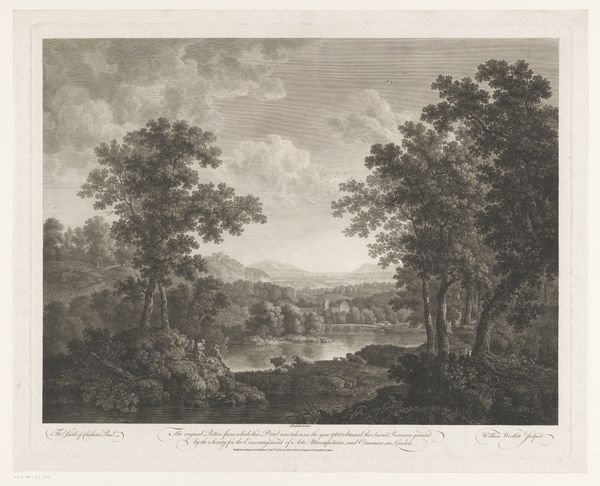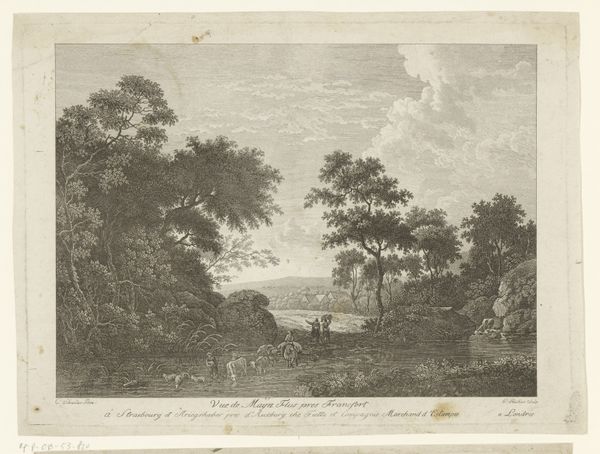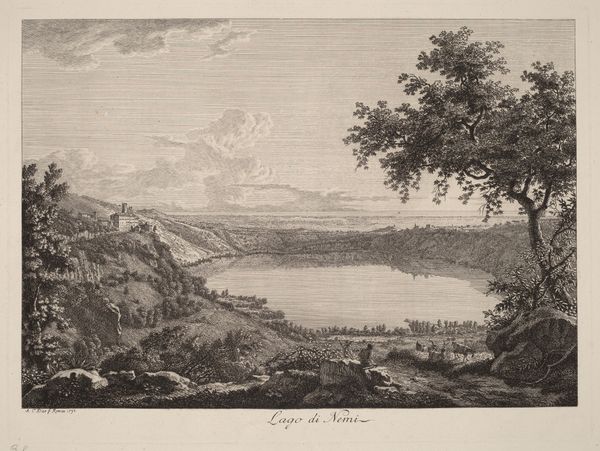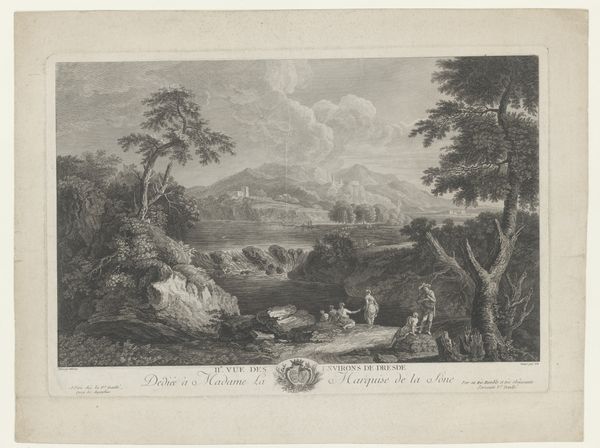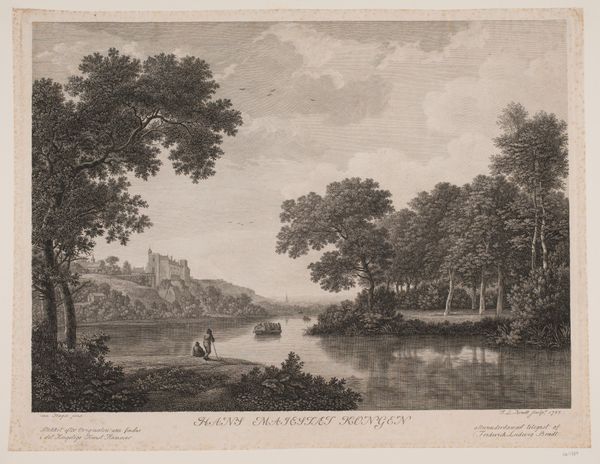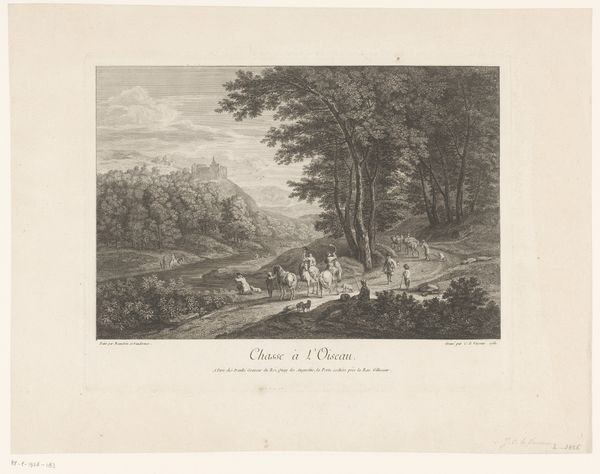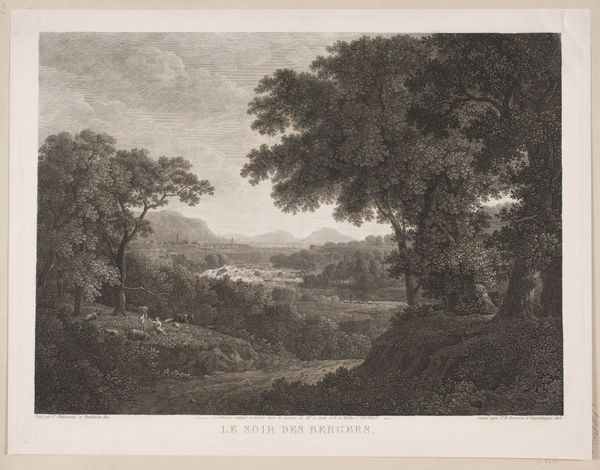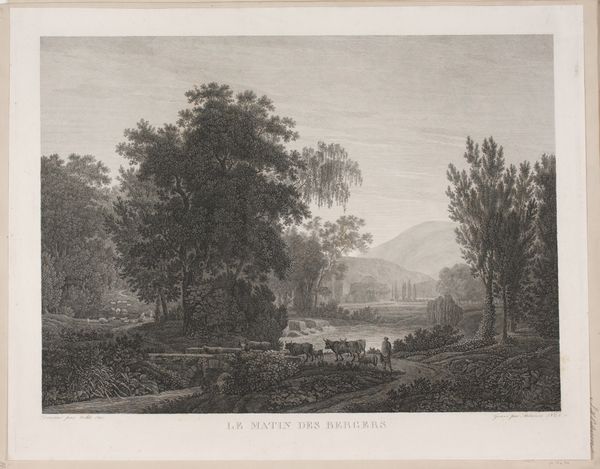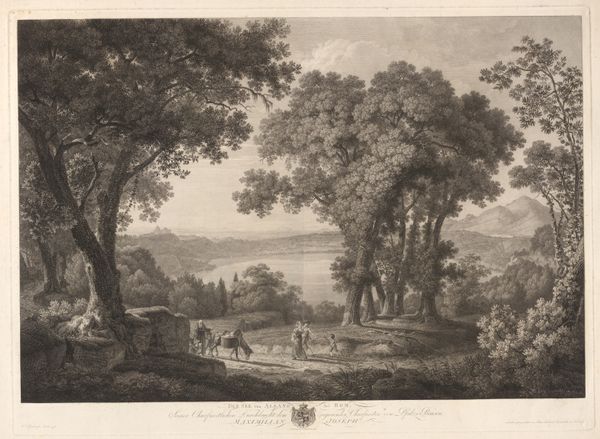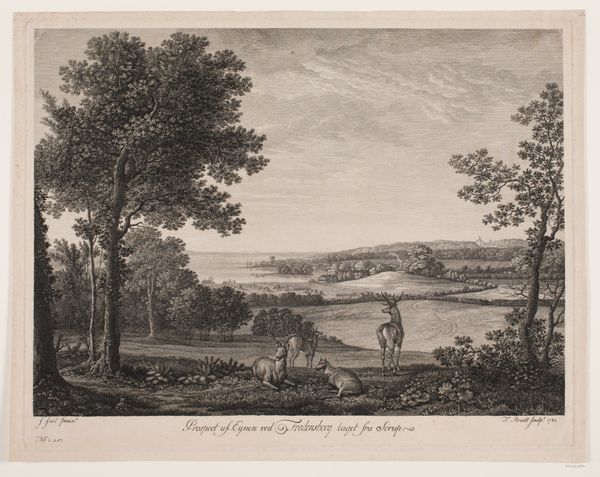
Dimensions: height 250 mm, width 361 mm
Copyright: Rijks Museum: Open Domain
This print of the Maas River was made by Nicolas Dufour in the 18th century, using the intaglio technique. That means the image was incised into a metal plate, likely copper, and then printed. If you look closely, you can see the remarkable detail that Dufour was able to achieve. The lines are incredibly fine, especially in the sky. The print’s tonal range is subtle, built up through thousands of tiny marks to capture the textures of water, foliage, and architecture. What gives this print particular significance is its relationship to commerce. Prints like this were part of a booming industry, as the new middle class wanted views of their cities and countryside. Making prints was highly skilled work, but the goal was to achieve efficient production, with workshops organized to maximize output. Dufour wasn’t just making art; he was participating in the visual culture of the Enlightenment, which itself was enabled by the era’s expanding economy. Ultimately, this is a reminder that art doesn’t exist in a vacuum, but is always part of a larger social and economic fabric.
Comments
No comments
Be the first to comment and join the conversation on the ultimate creative platform.
